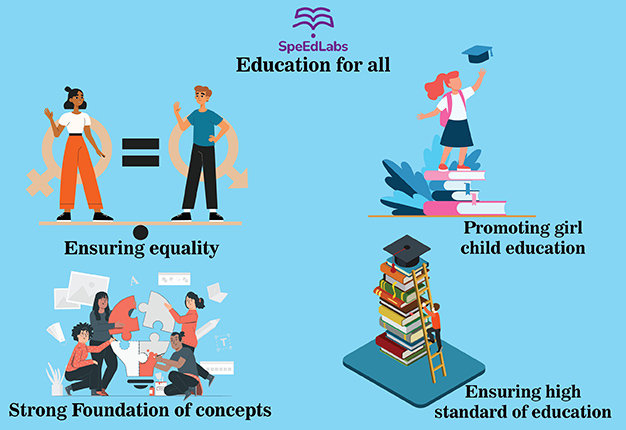Today we reminiscence UNICEF’s contribution towards the movement of Education for all as we pass sixty years when education was declared a basic human right for every person, and enshrined in the Universal Declaration on Human Rights in 1948. Since then, it has been reaffirmed in the International Covenant on Economic, Social and Cultural Rights (1966), the Conventional on the Elimination of Discrimination Against Women (1979) and the Convention on the Rights of the Child (1989), among many other international human rights instruments.
EDUCATION FOR ALL- A Global movement
Education for all became a global movement when UNESCO adopted it. It was led by UNESCO, aiming to meet the learning needs of all children, youth and adults by 2015.
THE CASE OF INDIA
- The layers of inequity woven into India’s social fabric are well known, and teachers and students alike bring these to the school and classroom. Social divides like language, caste, faith, gender, location, culture and customs are inherited from generation to generation together with their inherent biases.
- A child’s gender, economic class, location and ethnic identity largely define the type of school they will access, the kind of experiences they will have in school and the benefits they will reap from being educated. With the great diversity of learners in today’s classrooms, there comes the responsibility to provide equitable education to every child.
- Ensuring equity and excellence by delivering equitable, quality education in formal schooling lies at the very core of any country’s educational system, in which the teacher – the key facilitator of the education process – plays the most important role in shaping the child’s journey through schooling.
UNICEF WORKING ON EDUCATION FOR ALL
- Gender equality and inclusion are two of the most important aspects UNICEF considers as part of training programs for teachers and the wider community. Training for the community ensures that all children in the neighborhood around a school are enrolled, attend school regularly and are treated well in school. UNICEF has supported states to develop training modules and incorporate training on developing skills to respond to diversities in school and within classroom settings.
- UNICEF has led community mobilization programs in areas where education indicators are below par. The focus has been on mobilizing the community through localized campaigns, sensitization meetings involving existing community-level institutions, such as the attendance campaign, creating awareness about the entitlements of children and talking directly to particularly vulnerable families.
- UNICEF has commenced work in selected areas of Assam, Chhattisgarh, Jharkhand and Odisha that are affected by conflict, to provide children education as a fundamental right. In Assam, for example, UNICEF and partners have been able to reach small communities in hostile locations to ensure school attendance participation where a lack of education otherwise adds further to people’s marginalization. While the approach has been different in the four states, each focuses on aspects that will help children in these areas complete eight years of elementary education. Alongside this, both UNICEF’s Education and Child Protection sections have initiated inclusion programming in Jammu and Kashmir.
- UNICEF is also working to improve functioning of the Kasturba Gandhi Balika Vidyalayas (KGBV) – residential upper primary schools for children out of school, especially religious minorities and girls aged 11-14 years from marginalized groups. In addition, it has introduced a physical education and sports programme (Prerna, Handbook for Physical Education and Sports) and undertaken vulnerability mapping in selected KGBVs. Discussions have been initiated to improve transition rates of girls from the upper primary level to the secondary level of education.
- At the national level, UNICEF has engaged with the Department of School Education and Literacy in the National Evaluation of the KGBVs and coordinated a subsequent review with state level workshops.
- Digital Gender Atlas for Advancing Girls – a decision-making tool was developed by UNICEF to identify low performing geographic pockets for girls, particularly from marginalized groups such as scheduled castes, schedule tribes and Muslim minorities, on specific gender related education indicators.
- UNICEF has been working on the effort closely with the Indian government flagship education programme, Sarva Shiksha Abhiyan (SSA), both at the national and state levels, along with supporting states in developing teacher capacity and wardens’ management skills.
- UNICEF has also been working with girls’ collectives such as Meena Manch in states including Bihar, West Bengal and Uttar Pradesh to build self-confidence among girls, create awareness about the importance of education and attending school regularly and desired hygiene and sanitation practices, and develop leadership qualities and team spirit. There is evidence that involvement in these collectives has helped delay the marriage age of participants’ peers and others in the local community and increased the flow of children withdrawing from work and enrolling and regularly attending school.
- To further accelerate the efforts, UNICEF has also formed partnerships with various NGOs and the Mahila Samakhya Program (program of the Government of India for the empowerment of women through education).
Also published on Medium.

